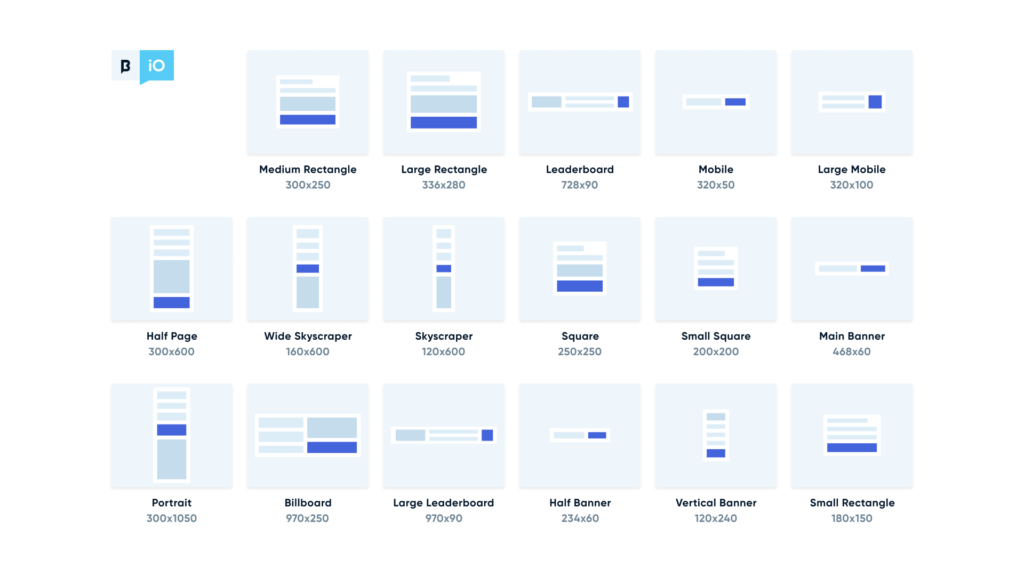Explaining Banner Advertisement to Anyone

We feel as gifted as Don Draper in “Mad Men,” at times when it comes to advertising, as one of the top (fictional) publicists in the play. However, advertising has been evolving since the 60s, and it’s in part due to just how expansive commerce has made the Internet.
For instance, the banner ad is quite a latecomer. Still, for top-notch placement, the banner ad is just that and has solidified its significance in making profits for marketers. But what is a banner ad and what does it work for? Well, we have a streamlined take on it that you can just use to help explain it to anyone.
What is Banner Advertising?
Also known as display advertising, the banner ad is analogous to digital signage in that they use images ( thus the word “banner”) to draw traffic to the employer’s website.
Ads are posted in areas of highly trafficked pages, generating brand recognition and clicks, sales, and leads. These high-visibility locations involve the foreground, lower, or lateral portion of the web page; locations where the eyes of consumers tend to roam.
Excellent wall banner advertisements catch the attention of the reader and suggest that he or she find out more information on what is being promoted. Rather than having a lot of structure and content, these ads use images or media to get across the message. Look at this example banner ad:
One LinkedIn sidebar banner ad appeared in the sidewall panel of a website screen that might be viewed. It looked big enough to grab either eye and appealing enough for me to stick around for a while.
The Way Banner Ads Work
Suppose that you are in the field of publishing. You succeed in drawing a great deal from your website content as it is helpful and worthwhile, although you have no way of commercializing your work. Your website, though, has a great deal of high-value real property that advertisers could exploit.
It makes the sale of those spaces an appealing offer. You can register with an online exhibition site for this purpose. A display net helps connect you to advertisers with a script that you can add to your site. And this script automatically advertises it without you having even to put a toehold on it. Then you get ” commissions” for each click on an ad that arrives off your website.
On the other side of the coin, suppose you are an editor. Assume you would be an advertiser. Because you want to raise your awareness of your product brand, therefore you would like your ads to show up on websites with high visibility, visited by your intended buyers. For advertising, instead of publishing, you pay directly to the network and can choose the kinds of sites you want your advertisements to be shown on. As long as the advert is successful, you get a lower cost per click, and this translates into a genuine return on investment for your company’s business.
Gain/win for the publishing and publisher and advertiser!
Do Banner Ads Perform Effectively?
Banner ads fit into the digital advertising space, one by far the highest revenue earner. The first quarter of 2019 saw digital signage revenue hit a milestone high of over $28.4 billion.
Bargain advertising is profitable thanks to software advertising, a terminology that outlines how advertisers display advertising. Software programs of these programs map ads to the sites’ browsers’ preferences.
To give an illustration, let’s say that LinkedIn’s promotional team wishes to utilize Google AdSense as part of their display chain. Google AdSense will then be selling LinkedIn space in the sidebar on the websites that pros are most likely to frequent, for example, Investopedia. That provides more revenue generation capacity for LinkedIn’s total revenue generation.
If you are a crypto publisher read this article to find out where to place banners on your website
To determine if the banner ads will be effective for you it is essential to understand how costs are distributed when this advertising method is employed.
Price of Banner Display Advertising
Since it is an auction-type scheme, the price of a campaign for banner advertising depends on the display chain you choose, advertisement size, competition level in your vertical, the prominence and character of the postings on the websites you are earning, and a lot more.
However, there can be two distinct models of conversion pricing for banners:
- Cost per mille – the price per 1,000 impressions.
- Cost per click – the price for each ad click.
Each display network’s charging structure varies, although they generally use a ” bidding” model, which is where you bid for the placing of your listings. Many times you get to pick which pricing model you want to use – CPC or CPM. One is better for conversions and the second is better overall for brand recognition and awareness.
On that basis, the higher your bid, the better it will be to reach your promotional targets. Many times a display chain will help you streamline your spending and timing in a way to get the most value out of the ads.
Once you understand the banner ad’s average price tag, it’s clear to see that ad positioning as well as banner dimensions have a major influence on the frequency of how often your advertisement is viewed and visited. Below, we look at both of these factors in more depth.
Placement of Banner Ads
Whatever kind of display chain you select should be transparent on which websites or publications your listings are going to be appearing. Here’s a Google profile page on the topic, for instance.
The idea is that you will want your ads to be displayed in front of an ideal target audience (rather than just anyone), for you to get proper traffic that has higher conversion potential for real leads in your marketplace. That being said, you need a good handle on the targeting capabilities of your display media so that you manage this effectively.
Choose the right ad format for your banners
Even though advertisers get a great deal of latitude regarding which websites they display on, they might not have much oversight over exactly where they show up on that page. Putting ads on the webpage is in the hand of the publisher. They do, nevertheless, have a monetary incentive to put ads in highly profitable places. Keep in mind that they receive a “commission” fee from the network display. Banner ads, therefore, do best when they are found:
- Near content;
- Over the fold;
- Above the left-hand side.
To a greater extent, it is under the opponent’s considerable control to determine the size as well as the design of the ads he or she chooses to produce.
Banner Advertising Sizes Standard Banner Ads
A major factor in the performance of your promotion is the dimensions you select for your announcement(s). The right sizing and layout can have a big influence on the click-through count and the overall performance of your ad. Below are the most popular ad dimensions that are chosen by some advertisers:
- Medium Banner: 300 x 250;
- Leaderboard: 728 x 90;
- Wide Skyscraper: 160 x 600;
- Half-page: 300 x 600;
- Large Leaderboard: 970 x 90;
- Billboard: 970 x 250;
- Large Rectangle: 336 x 280;
- Skyscraper: 120 x 600;
- Small Square: 200 x 200;
- Square: 250 x 250;
- Vertical Banner: 120 x 240;
- Full Banner: 468 x 60;
- Half-Banner: 234 x 60;
- Portrait: 300 x 1050.
Knowing the right size for your bid listings is very essential – but it is not the only thing you need to think about. To make certain that your banner advertisement is impactful for your intended target audience, we already have a couple of tips to bear in mind as you design yours.

Creating a Banner Advertisement
Assuming you already have all set of instruments to design a banner advertisement. Although the design execution is up to you, it’s essential to include such elements in the advertisement to ensure that it’s powerful and not simply make it seem cluttered on some kind of website page.
Just to exemplify the moves, here is a 300 x 200 size banner advert from the Mailchimp site on Entrepreneur.
- Include a CTA in the text
The call to action (CTA) is something that asks prospects to learn more information about your good or service. This is what gets people to click on the advert and interest them in learning more. At the bottom of Mailchimp, a CTA is the dark blue ‘Get Started’ icon at the top of the listing.
The bright, attention-grabbing CTA directs your audience in the proper direction, and a reference to a page for your featured item is a nice trick to get them to click on it.
- Attach your respective trademark
Unless your company brand identity can be seen, just how will anyone know your business is a good one? A Mailchimp logotype is at the lower end of the advert in a visible place. It doesn’t have to occupy the whole ad or break the flow of the others, it simply has to at least be distinctive from the rest of the listing’s pictures.
- Make certain to employ special terms
Using search terms and elements of action, not only streamlines your ad to the search engines but also has a better chance of making browsers engage with your listing simply because your product seems right for it. The words Mailchimp uses are ‘award-winning’, ‘support’, and ‘get started.
If you’re looking for marketing tools to make your life easier, it’s software that offers endorsements.
- Make good-quality visual images
For your advertisement to keep it looking professional, any graphic elements, like images or GIFs, should be of high quality. Although moving pictures are a great way to keep your ad engaging, stationary pictures are just equally as powerful.
The Mailchimp images are funny and get the message out. Another way their logotype conveys imagery is also a way of doing so.
- Maintain simplicity
Having a full ad is anything but a nuisance for internet browsers. A good ad has minimal text, a single image or two, and CTAs. The Mailchimp ad is one sentence long, and containing a lot of text.
For some banner ads, there is no wording or pictures at all, only the logo and CTA. Though your ad may not have to be that minimalist, it shouldn’t have a whole lot of data in it. Should your ad include more than one short offer, it might be overly long.
Interesting? Let’s proceed with the next article “Top Banner Advertising Cases“


